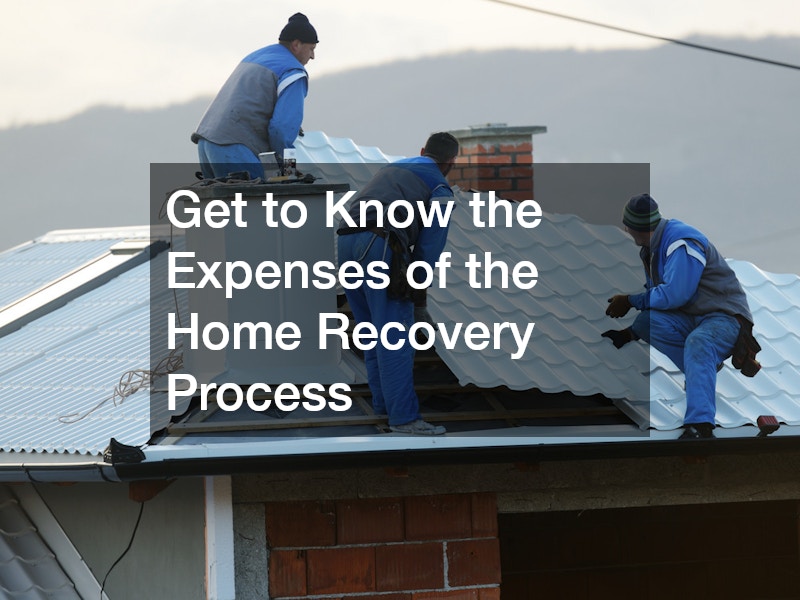
Recovering your home after damage—whether from fire, water, storms, or general aging—requires careful budgeting and informed decisions. From assessing structural repairs to coordinating with specialized contractors, each step involves costs that can add up quickly. Understanding typical expenses associated with cleanup, restoration, and upgrades empowers homeowners to plan effectively and avoid surprises. In this comprehensive guide, you’ll explore the major categories of home recovery costs, learn about key service providers, and discover strategies to manage your budget while achieving a safe, beautiful result.
Assessing Damage and Planning Remediation
Before diving into repairs, begin with a thorough assessment of your home’s condition. Engage a qualified inspector or restoration specialist to evaluate structural integrity, moisture levels, and hidden deterioration. This initial inspection—often conducted by a water damage contractor—can range from $300 to $600, depending on property size and complexity. Detailed reports outline necessary interventions and help you prioritize work.
Preparing a recovery plan involves estimating costs for multiple trades. An arborist may need to inspect trees threatening foundations or powerlines, typically charging $150 to $300 per visit. Likewise, window contractors and interior door services specialists provide quotes for replacing damaged units; expect $200–$700 per window and $150–$400 per door, respectively. By aggregating these estimates, you establish a roadmap that balances urgency with budget constraints.
Structural Repairs and Foundation Restoration
Structural repairs form the backbone of home recovery. If your foundation shows cracks or settling, hire a foundation repair crew—costs can span $2,000 to $15,000 based on severity. Once the base is solid, framing repairs follow, with carpenters charging $70–$100 per hour. Addressing compromised framing early prevents progressive collapse and additional expense.
Exterior walls also demand attention. Siding replacement averages $5–$14 per square foot, while masonry repairs often cost $10–$30 per square foot. For roof damage, turn to a local commercial roofer experienced with storm damage and flashing installation; roofing repairs typically run $300–$1,100 per square (100 sq ft). Coordinating structural and exterior work efficiently minimizes labor costs and accelerates overall recovery.
Managing Water Intrusion and Moisture Control
Water intrusion poses significant risks, from mold growth to structural rot. Engaging a reputable water damage contractor is critical; emergency water extraction and drying services can range from $1,000 to $4,000 for medium-sized homes. This includes high-capacity dehumidifiers, moisture meters, and specialized drying equipment.
Once moisture levels subside, mold remediation begins. Remediation costs vary based on infestation extent—typically $500 to $6,000 for residential projects. Insurance may cover part of these expenses, so document every invoice. If appliance failure contributed to flooding, consider installing leak-detection devices to prevent future damage.
Addressing Smoke and Fire Restoration
Fire damage carries both visible and hidden cleanup needs. Initial debris removal and board-up services cost $500–$2,000. Then, specialized smoke damage cleaning service providers tackle soot, odors, and residue. Comprehensive cleaning—including HVAC ductwork, walls, and contents—runs $3,000 to $10,000 depending on affected area.
Repainting and refinishing after smoke remediation add another $2–$6 per square foot. If structural elements charred, minor carpentry or partial rebuilds may be required, with average costs of $50–$100 per square foot. Early intervention by smoke damage cleaning service experts ensures odors don’t linger and indoor air quality meets safety standards.
Navigating Flood Recovery and Mold Prevention
Flood recovery starts with water removal, which flood damage companies typically charge $3–$7 per square foot to pump out and dry affected areas. After extraction, drying and dehumidification services by a water damage contractor may incur $500–$2,000 over several days. Monitoring moisture levels prevents mold proliferation.
Once dry, flooring and wall materials often need replacement. Expect to spend $2–$8 per square foot for vinyl plank or laminate, and $5–$10 per square foot for mid-range hardwood. Baseboards and trim—restored by a general carpenter—add $3–$8 per linear foot. Mold-resistant drywall or backer boards cost slightly more but offer lasting peace of mind.
Repairing Roofing and Exterior Envelope
The roof shields your home from weather, so efficient repairs are vital. Local commercial roofer services for hail or wind damage typically charge $250–$600 per square for shingle replacement. For flat or low-slope roofs on garages and extensions, expect $300–$800 per square. If fascia or gutters bent in a storm, add $4–$7 per linear foot for gutter replacement and $5–$10 per linear foot for fascia boards.
Garage door companies often offer coordinated services for integrating garage rebuilds with roofing work. A new overhead garage door installation runs $600–$2,000 depending on model and materials. Bundling services may yield discounts, so discuss combined packages with both your roofer and garage door companies.
Electrical System Upgrades and Repairs
Damaged wiring or aging panels present safety hazards. Hiring licensed electricians to inspect and repair electrical systems is non-negotiable. Basic panel upgrades cost $1,000–$3,000, while comprehensive rewiring can reach $4,000–$10,000 for older homes. For small-scale repairs—replacing outlets, switches, or damaged circuits—budget $100–$200 per point.
Modernizing lighting with energy-efficient fixtures and smart controls can be programmed during electrical repairs. Bundling electrical work with other trades reduces mobilization fees. Ensure your electrician pulls required permits; code-compliant upgrades protect your household and add resale value.
Interior Finishes: Doors, Windows, and Flooring
Once structural and mechanical elements are secure, tackle interior surfaces. Flooring replacement costs vary widely: carpet costs $2–$5 per square foot, vinyl plank $2–$8, and engineered hardwood $5–$12. Removing old flooring adds $1–$2 per square foot. High-traffic areas may warrant more durable materials or protective finishes.
Window contractors charge $200–$700 per replacement window, influenced by frame material and glass type. Double-pane, energy-efficient windows offer long-term savings despite higher upfront costs. Interior door services specialists replace or refinish interior doors for $150–$400 per door. Upgrading to solid-core doors improves sound insulation and aesthetics.
Kitchen and Bathroom Restoration Costs
Kitchens and bathrooms often sustain the most visible wear. Cabinet refacing starts at $4,000 for a small kitchen, while full cabinet replacement can cost $10,000–$25,000. Countertops range from $20 per square foot for laminate to $75–$200 for granite or quartz.
Plumbing fixture replacements run $200–$800 per fixture installed. Tiling backsplashes and showers adds $5–$15 per square foot for materials and labor. Coordinate with your water damage contractor if moisture issues recur behind walls. Thoughtful restoration in these key rooms boosts comfort and resale appeal.
Landscaping and Site Cleanup
Outdoor recovery encompasses debris removal, grading, and replanting. An arborist inspects and trims damaged trees for $150–$300 per visit; full tree removal can run $500–$2,000 depending on size. Replacing sod or reseeding costs $0.50–$1 per square foot. Driveway repairs—crack sealing at $0.50–$1 per linear foot or resurfacing at $2–$6 per square foot—restore curb appeal.
If landscape beds washed out, reinstallation runs $5–$15 per square foot, depending on plant selection and soil amendments. Coordinating site cleanup with flood damage companies or your chosen arborist streamlines efforts and prevents erosion.
Contingencies, Permits, and Project Management
Always account for permit fees—generally $50–$500 depending on scope and local regulations—and a contingency fund of 10–20% for unforeseen issues. Hiring a project manager or general contractor at 10–20% of total project cost simplifies coordination among trades.
Regularly communicate with all service providers including garage door companies, electricians, and window contractors to ensure timelines align. Detailed contracts with clear payment schedules protect you from cost overruns. Successful home recovery hinges on proactive planning, transparent budgeting, and strategic oversight.
Restoring your home after damage is a multifaceted process involving cleanup, structural repairs, mechanical upgrades, and finishing touches. By understanding the typical expenses—from engaging a smoke damage cleaning service and water damage contractor to budgeting for flooring, window contractors, and interior door services—you can build a realistic budget and avoid costly surprises. Partnering with reputable flood damage companies, local commercial roofer experts, and certified electricians ensures each phase meets safety and quality standards. Allocate funds for contingencies and permits, and consider professional project management to keep the recovery on track. With careful planning and informed decisions, you’ll not only restore but enhance your home’s functionality, comfort, and value.




